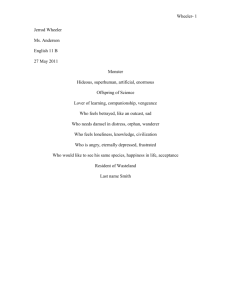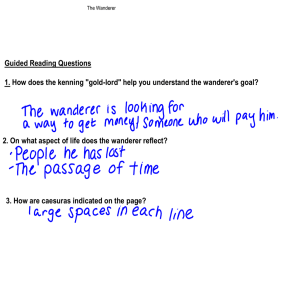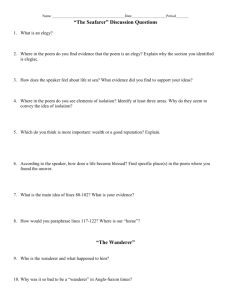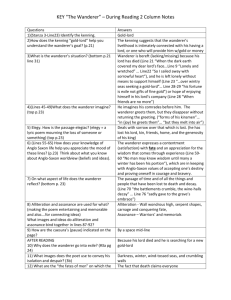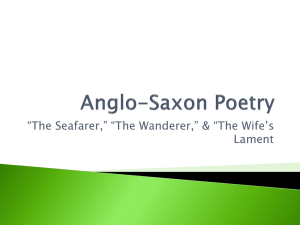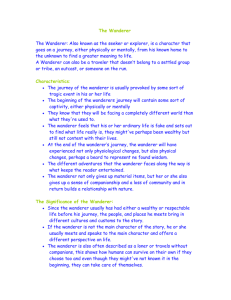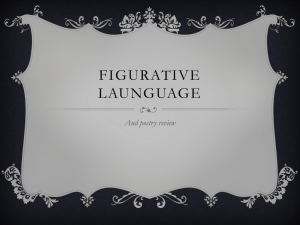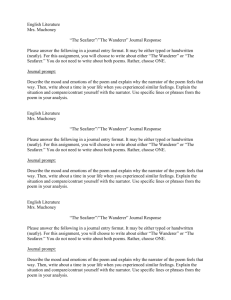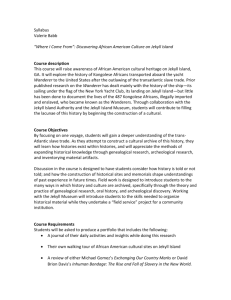sample paper 1
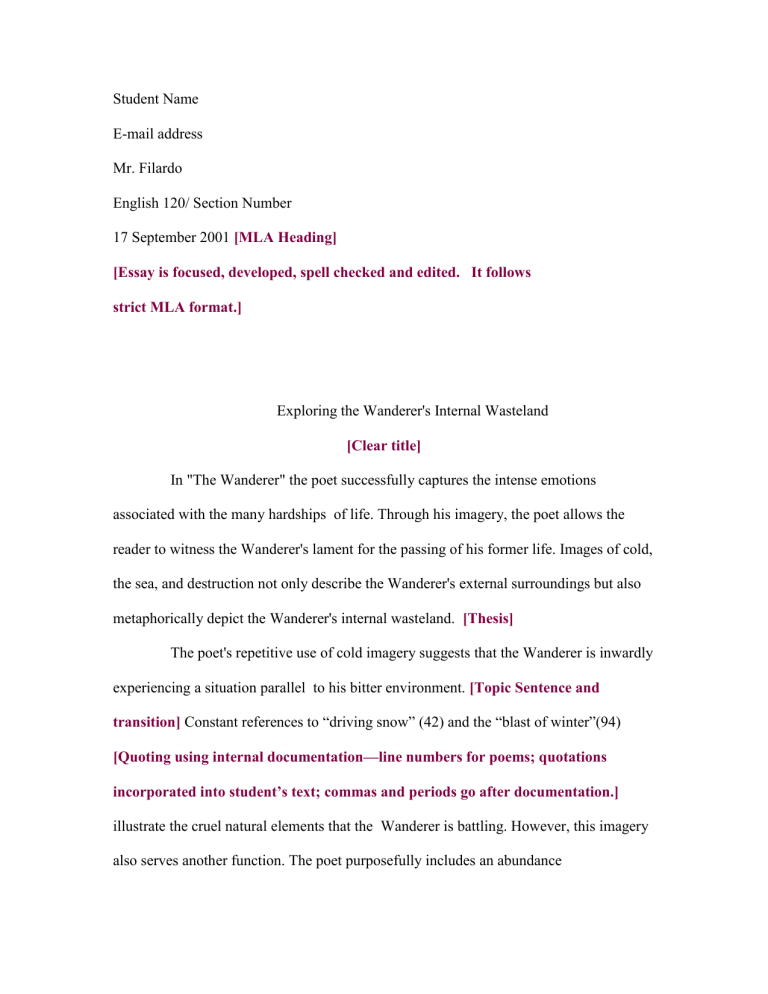
Student Name
E-mail address
Mr. Filardo
English 120/ Section Number
17 September 2001 [MLA Heading]
[Essay is focused, developed, spell checked and edited. It follows strict MLA format.]
Exploring the Wanderer's Internal Wasteland
[Clear title]
In "The Wanderer" the poet successfully captures the intense emotions associated with the many hardships of life. Through his imagery, the poet allows the reader to witness the Wanderer's lament for the passing of his former life. Images of cold, the sea, and destruction not only describe the Wanderer's external surroundings but also metaphorically depict the Wanderer's internal wasteland. [Thesis]
The poet's repetitive use of cold imagery suggests that the Wanderer is inwardly experiencing a situation parallel to his bitter environment. [Topic Sentence and transition] Constant references to “driving snow” (42) and the “blast of winter”(94)
[Quoting using internal documentation—line numbers for poems; quotations incorporated into student’s text; commas and periods go after documentation.] illustrate the cruel natural elements that the Wanderer is battling. However, this imagery also serves another function. The poet purposefully includes an abundance
of "frozen" (29) phrases to represent the "Blowing snow" (94) and "Raging hail" (97) occurring within the Wanderer. Through visible images, the poet reveals the Wanderer's internal bitterness, anger, and feelings of abandonment with anticipation that the reader will be able to comprehend the depth of the Wanderer's sorrow.
His internal wasteland further develops with the poet's descriptions of the sea.
Images of the abstract, yet violent sea pertain not only to the Wanderer's location but also to the Wanderer himself. [Topic sentences and transition] Characterized as “gray”
(40), the vast sea appears almost colorless to the reader. Similarly, the Wanderer exhibits a numbness or shock following the deaths of his comrades. The abstract color of the sea provides insight for the reader into the inner emptiness that the Wanderer possesses.
Another aspect is presented upon the poet's description of the sea as “tossing” (51). The poet stresses the importance of this image by stating it twice throughout the poem's entirety. Externally, the "tossing” represents the violence of life; however, this image also functions as a metaphor for the difficulties that the Wanderer is enduring. Symbolically, the violent sea illustrates the confusion and the chaos associated with his internal wasteland. Thus, analysis of the poet's sea imagery illustrates the correlation between the sea's descriptions and the internal state of the Wanderer.
In addition to his cold and sea imagery, the poet thoroughly develops a third type of imagery: destruction. One such example states that "Walls stand rime-covered and swept by the winds. / The battlements crumble, the wine-halls decay (69-70). [Note virgule (slash) between lines of poetry, with a space on either side] The poet describes man-made structures that have been destroyed and are
in ruins. This outward destruction is symbolic of what is actually occurring within the
Wanderer. Similar to man-made structures, the Wanderer is a product of his comrades. Without their support and companionship on the lonely sea, the
Wanderer will internally deteriorate.
After analyzing the cold and sea imagery, it is apparent that the Wanderer's demise has begun. The poet continues by declaring that "All the foundation of earth shall fail!" (102). This bold statement foreshadows the Wanderer's death. The destruction of the earth represents the destruction of the Wanderer. Inevitably, the Wanderer's internal wasteland will consume him, and the Wanderer will pass away as did his former way of life.
Thus, the poet's images of cold, the sea, and destruction perform dual functions of representing both external images of landscapes and structures as well as the metaphoric wasteland inside the Wanderer. The poet intends for his specific illustrations to provide readers with a deeper understanding of his complex character, the Wanderer.
For a brief period, readers are able to experience the world through the eyes of the
Wanderer. Upon entering and exploring the Wanderer's internal wasteland, the poet challenges his readers to identify with the Wanderer and discover whether or not an individual wasteland exists within themselves. [Good closure]
